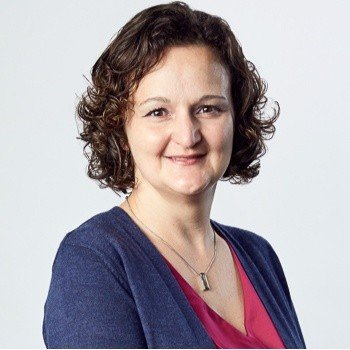Many brands go through iterations over the years. Rebrands can signal a new era, a new stage of growth, a deepening or widening of services and products, or a more fundamental change in direction.
But a rebrand is not a decision companies should take lightly: it’s no small undertaking. A brand goes to the heart of what your company is for, how it behaves and, ultimately its purpose. The design, the logo, the look and feel are important tools to bring that purpose to life, but you should beware that a rebrand will rarely begin and end with choosing colours and picking fonts.
What’s more, if your brand has been in the market for a while, you should first consider what it means to the people invested in it: employees, partners, customers. Brands can guide people’s perceptions, generate pride among employees and provide a clear framework for decision-making. If there is already an awareness, an affection, or even a behaviour which is positively influenced by your brand as it is, it’s worth asking whether the arguments for changing it – compelling though they may be – are enough to risk that momentum.
If they are, and you are still contemplating a rebrand, you should next consider how well cemented, and how well articulated your brand purpose is already. Rebrands should be never about throwing away the work you have already done. The key to a successful rebrand is defining and codifying the core DNA of the business and then evolving it to better represent your company as it is now.

One brand not short of purpose is Cervest, a cloud-based provider of AI-powered Climate Intelligence, built to transform how we build, manage, and de-risk our planet’s most valuable assets—ultimately empowering everyone with the tools to adapt and decarbonise at scale.
Following its recent brand update, we asked Melissa Ayres, chief marketing officer at Cervest about the motivations behind its rebrand, practical tips on what to expect – and what to avoid – as well as their ambitions for the future.
What made you feel it was the right time to rebrand?
It was a natural outcome of our Series A funding, and our investors’ strong endorsement of our Founder and CEO Iggy Bassi’s category leadership vision. Simply put: To be a category leader, you need a distinctive, world-class brand that stands out from others in your space. A great brand separates the leaders from the followers.
Was it important to align it with your US expansion?
Although the US is an important market for us, it was not about one market. It’s about being the Climate Intelligence (CI) category leader globally.
What does it do that the previous brand didn’t? Do you feel like now the packaging better reflects the content?
It is distinctive in the climate tech space, thanks to the illustrations and colour palette, which leads with purple. We commissioned bespoke illustrations from a fantastic illustrator, Sam Chivers, and bought all the rights to them so that no one else can use them. Illustration allows us to show the world in a future state as we imagine it – a climate intelligent world — and to make complex concepts like the Climate Intelligence Network™ and Earth Science AITM understandable and relatable.
What are the things you wish you knew?
I’ve done a few rebranding projects so I was aware of the potential pitfalls. In retrospect, I was clearly in denial about how truly hard it is to do a rebranding project on an accelerated timeline, alongside doing all the other things that need to be done to scale a marketing function, all with a small (but mighty!) team.
I’ve also had the experience of the CMO and CEO not being aligned on brand direction. That was not the case at all in this instance. Iggy, our CEO, embraced the opportunity to take a bold direction with our brand.
Were there any risks to switching up the brand?
That it would take too long. These types of projects typically take 12-18 months or more. We did it in five months. There is no time to lose when you have your sights set on creating and leading a new category.
How well can you brand deep tech to make it accessible?
Very well. Just look at Google. Driven by deep tech. Completely accessible. Recognisable globally. And it even became a verb, “Google it”. We aim to make Cervest a relatable, globally recognisable brand. And we imagine all kinds of possibilities.
Was there any science or data specific to this rebrand?
Although advanced science and technology are at the core of our CI platform and product suite, our buyer is not a scientist or a software developer. Our customers are enterprise decision-makers, including CFOs, risk managers and ESG/sustainability directors.
They are also credit managers in banks, and NGO and government policy leaders. The thing they all have in common is the need to manage asset-level risks and opportunities resulting from climate change. And they all want to know that the science behind the intelligence we offer is credible. Our brand pillars take all of this into account in how our brand is visualised and verbalised.
- We’re calmly confident. We inspire and guide action.
- We’re proudly human. We balance scientific with approachable.
- We’re optimistically pioneering. We‘re grounded in reality and always looking ahead.
What’s next for Cervest’s brand?
Our goal is to build and lead a new era of open, networked Climate Intelligence where climate is at the core of every decision. As the CI category grows, we will be the only company to offer cloud-native, automated Climate Intelligence built on irrefutable and evolving science, quantification for every asset and open access for all.




Would you like to write the first comment?
Login to post comments